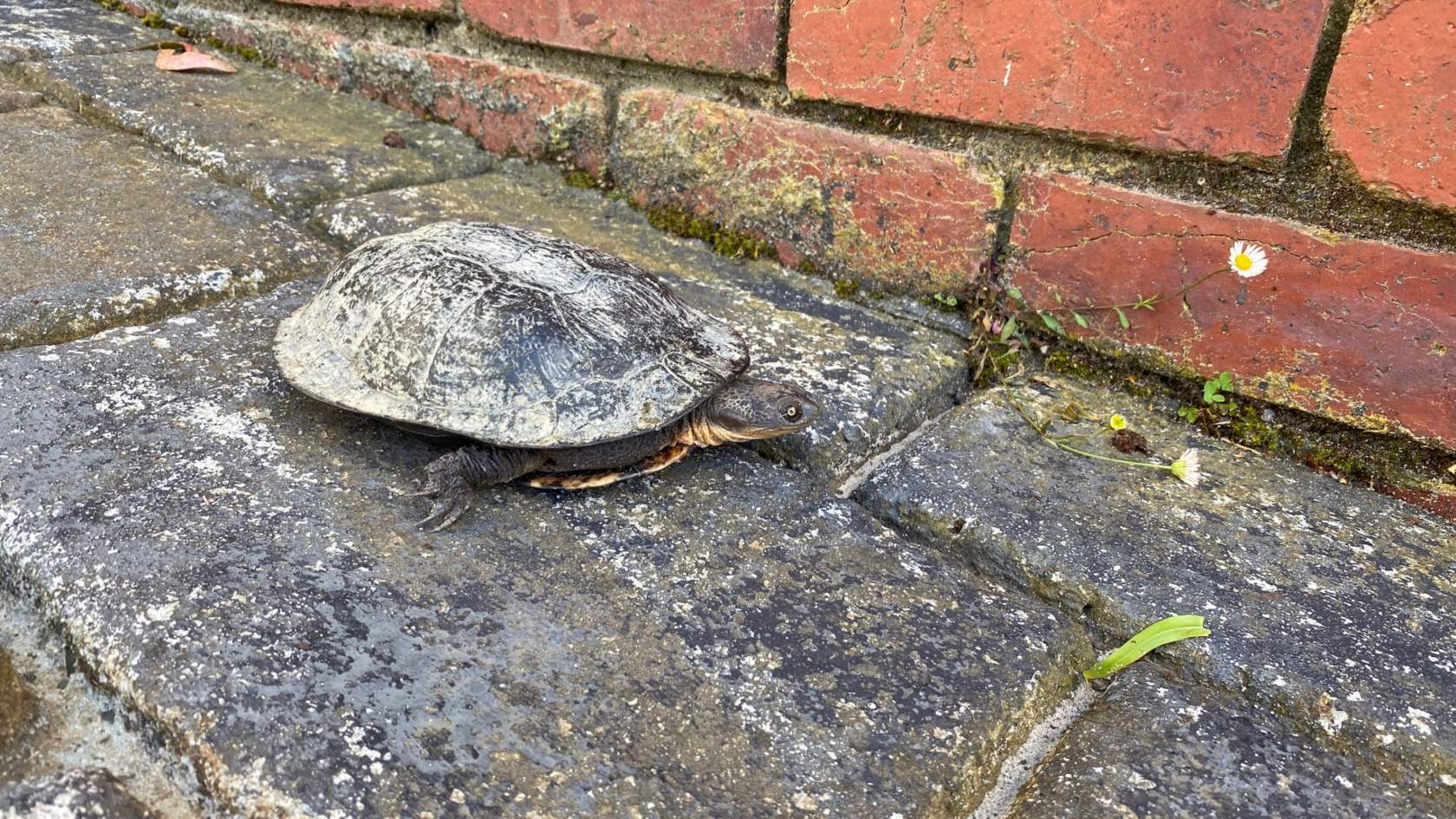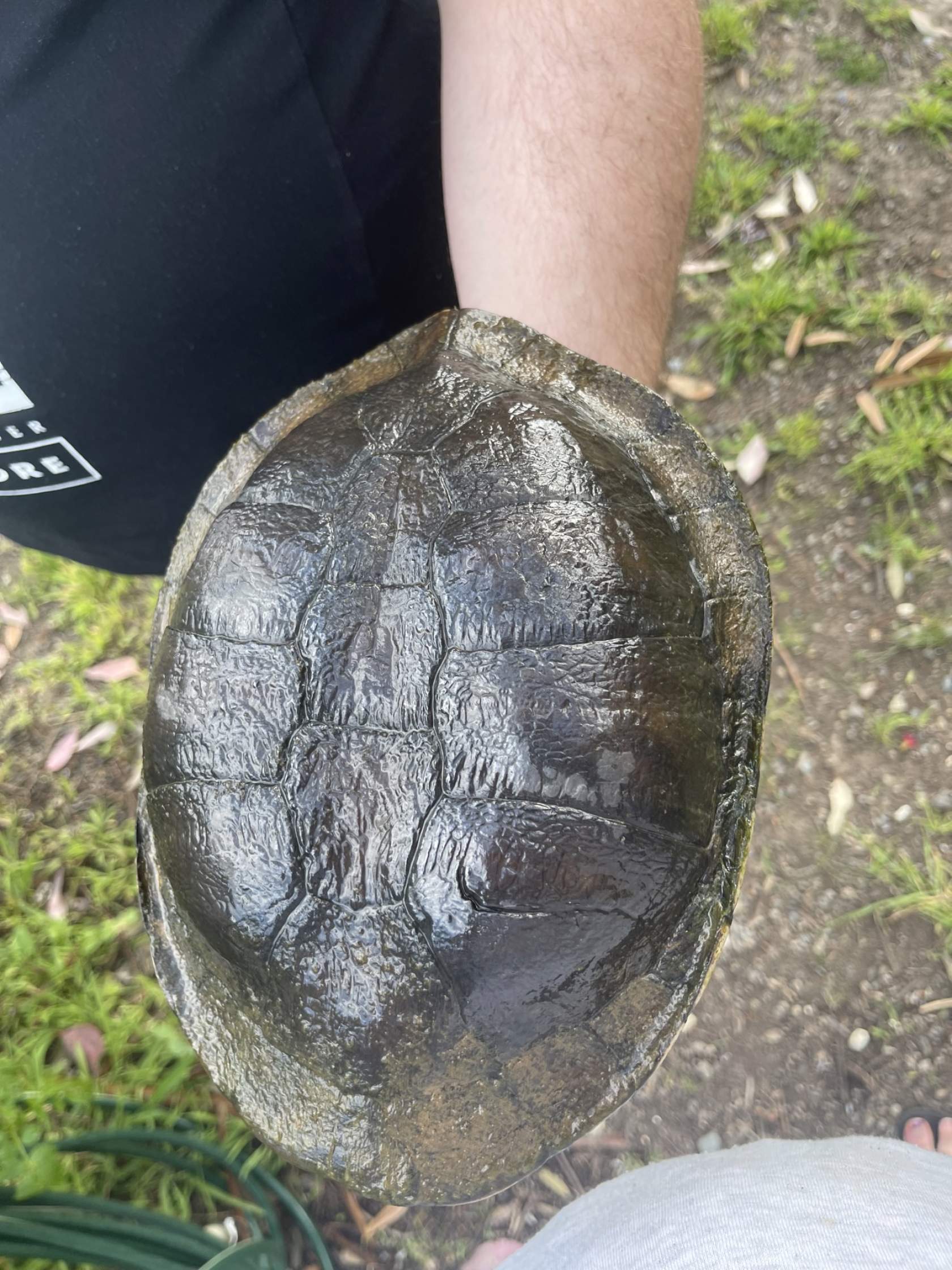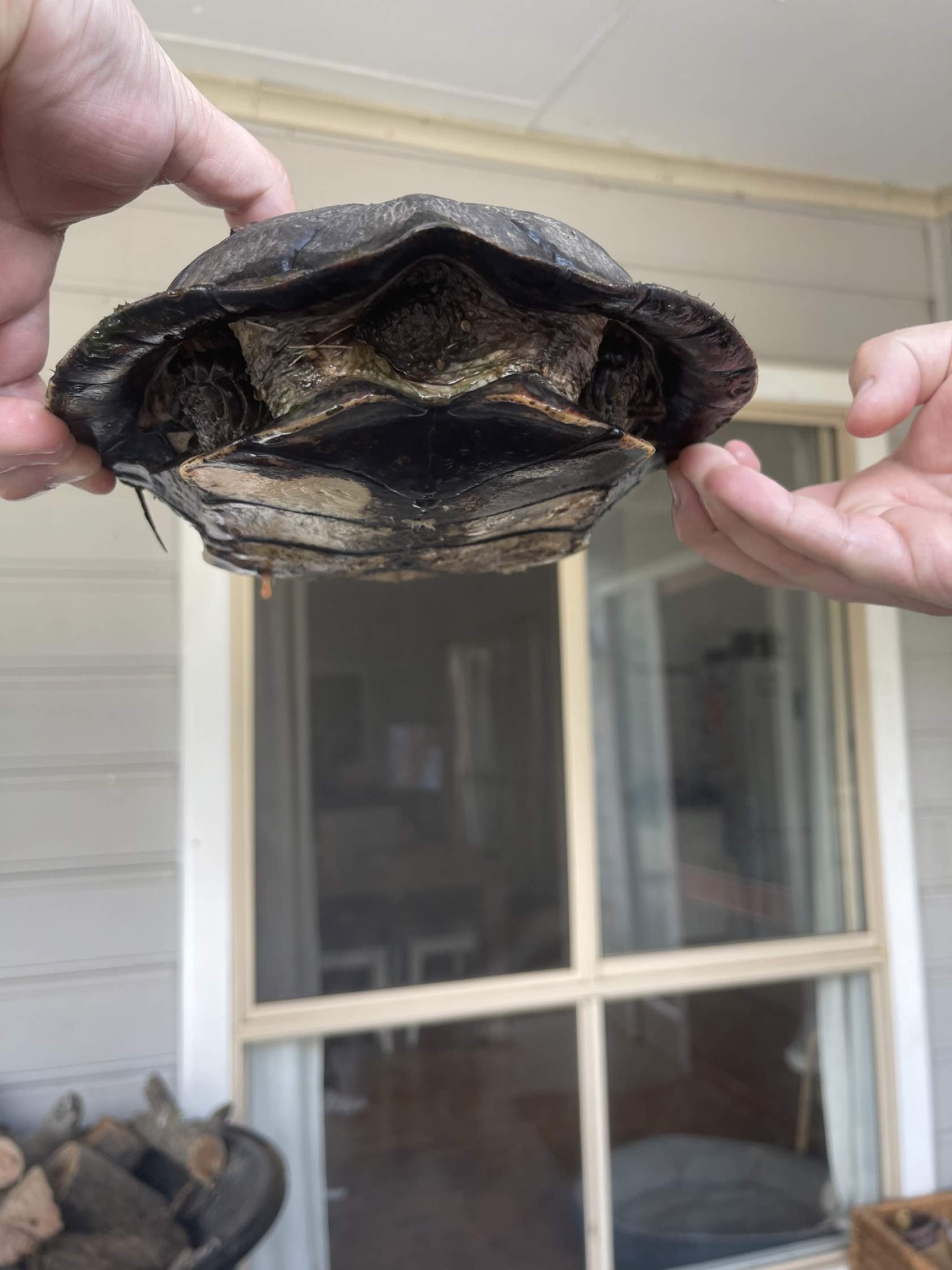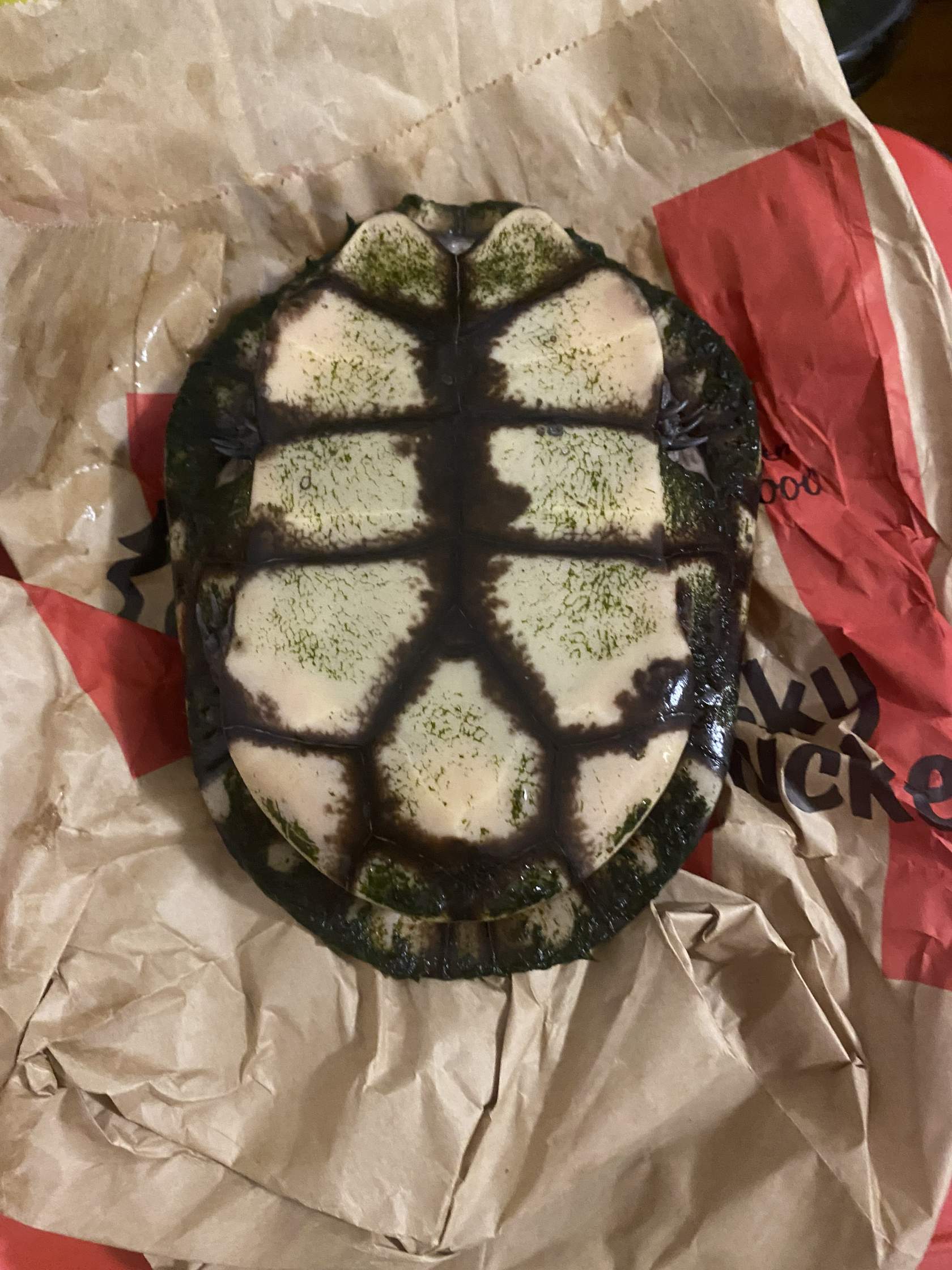
The Common Long-necked Turtle (Chelodina longicollis) is a native turtle species endemic to Australia. They have a wide distribution along the east coast of Australia up to the base of Queensland.
Appearance
These turtles are named after their long, skinny neck which can sometimes grow as long as their shell. Being a medium-sized turtle, their body length spans approximately 25cm at maturity, with females typically growing larger than males. This species of turtle is a side-necked turtle which means they will move their head side-to-side as opposed to pulling it back into the shell.
A telltale difference between the common long-necked and the broad-shelled turtle is the pattern on their underside (called plastron). A long-neck turtle has a black, grid-like pattern where the broad-shell does not.
Distribution and habitat
Common Long-necked turtles are found throughout Victoria, preferring slow-moving waterways such as dams, swamps and lakes. During their breeding season, they can travel great distances and can be found in some unexpected places such as suburban streets, backyards and pools.
Diet
Tadpoles, insects, small fish and frogs make up the majority of their carnivorous diet. They utilise their ‘snake-like’ neck when hunting using a strike and gape method like that of snakes. This involves tucking the neck under their shell to get closer to the prey before quickly striking out and sucking the prey into their jaws like a vacuum.
Behaviour
Despite being primarily solitary, multiple individuals can coexist in the same ecosystem. They move to new habitats quite regularly and can travel great distances. Communication occurs via touching or the release of pheromones. When under a perceived attack, they may produce a strong, pungent musk as a deterrent, so be careful if attempting to pick one up!
Breeding season
Breeding season occurs in the warmer months generally between December and February. Their mating ritual includes a mutual head bobbing behaviour which is used to attract a suitable mate. Females dig a shallow hole and lay four to 20 eggs annually. The eggs hatch after approximately four months of incubation.



General fun facts
What can you do to help?
The most common turtle reports made to Wildlife Victoria are when a turtle has been found wandering or displaced, or when they have been hit by a vehicle.
While the broad-shell and Murray River turtle will both predominantly stay in the water, long-necked turtles often spend time on land, and can actually spend up to six months out of water if required. What is often reported is when a turtle has been flushed down a gutter and into a drain system due to heavy rains or flooding. When found in a suburban or urban area, this can often lead to them being mistaken for a lost pet, when they are more commonly a wild turtle that has been displaced. If you see a turtle in an unusual place, please call our 24/7 Emergency Response Service on (03) 8400 7300 for advice.
A common call to Wildlife Victoria’s Emergency Response Service regarding turtles is when an animal has been hit by a vehicle. Turtles that have been hit by a vehicle are often left with a cracked or broken shell, which is equivalent to the pain from a broken bone. Therefore, it’s important they receive veterinary attention as soon as possible.
We hope that by increasing your understanding and awareness of our beautiful wildlife, you will feel empowered to manage wildlife situations confidently and in an informed, safe and appropriate manner. For support at any time, please call our 24/7 Emergency Response Service on (03) 8400 7300.
